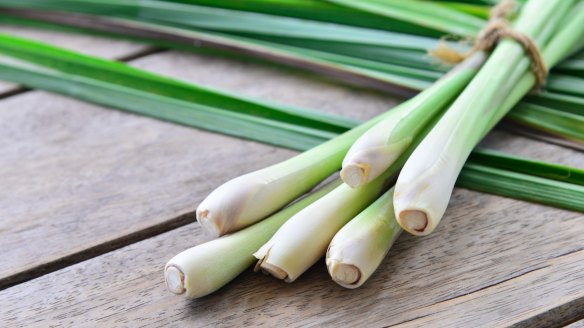The best ways to use fresh lemongrass in the kitchen

What part of the lemongrass stalk do I use? E. Gadek
All of it. Lemongrass is packed with essential oils reminiscent of lemon but far more complex – citrus, some dirtier resinous notes and tropical floral notes. It is part of a family of aromatic grasses, Cymbopogon, found in tropical climates, and is used in perfumes, hoodoo ceremonies, traditional medicine, insect repellent, and the kitchen. The long, green leaves are sharp-edged, fibrous and not suitable for eating. Instead, remove with a pair of kitchen scissors, snip into 1cm pieces and add to a cup of freshly boiled water with a few fine slices of ginger to make a refreshing hot drink. Sweeten with honey if you wish. The stem's lower end is softer and will reduce to an edible pulp once pounded in a mortar with a pestle. First, remove any of the dry outer leaves and discard, using the pale, softer parts. You can also use a lemongrass stem in a cocktail, use as a skewer for barbecued pork or prawn mince, or stuff the leaves inside a fish before steaming or a chicken before roasting. This fragrant and attractive grass will thrive in a large pot as well as in the ground in a sunny position. If you're planting in soil, make sure it is fertile and well drained – water well. Citronella oil in the leaves can repel some insects, such as mosquitos, so a few clumps around the barbecue table come in handy.
Why do so many recipes specify to skin and de-seed tomatoes? L. Young
I do not know one home cook who de-seeds or skins a tomato. But restaurant chefs and commercial cooks do it all the time. It's about going the extra mile for the guest. A mate who works in an aged care facility uses de-seeded tomatoes because the seeds can get under dental plates and cause irritation. Great bruschetta is made with schiacciare senza semi (crushed tomatoes without seeds). My mate Frank Camorra, from Melbourne restaurant MoVida, always removes tomato seed and skin when cooking, even paella. "It's about perfect texture," he says. There are reports of tomato seeds tasting bitter, but I can't find corresponding research. To peel tomatoes, place them whole in a bowl and cover with boiling water. Leave for 10 seconds then remove and plunge into iced water. The skins should slip off easily. If they don't, repeat the boiled-iced water routine. To de-seed, slice the tomato in half and cut a V, taking out the centre core and the seeds. Use the tip of the knife to remove any remaining seeds. You can add the seeds and gel surrounding them to stocks, soups and stews.
Letters
Recently we were discussing finding ways of avoiding the tears when chopping onions. I highlighted the technique my young daughter brought to our kitchen when she donned her swimming goggles and was chastised by several readers for outsourcing the less desirable tasks to vulnerable workers. Other suggestions from readers to avoid onion tears are: contact lenses; chewing gum; blow the fumes away with a fan; keep your mouth full of water while chopping; and breathing through the mouth. H. D'Cruz suggests one simply follow the example of the former Member for Warringah and bite them whole, and you'll never shed a tear.
Send your vexing culinary conundrums to brainfood@richardcornish.com.au or tweet to @foodcornish
Appears in these collections
- More:
- Food
- Brain food
